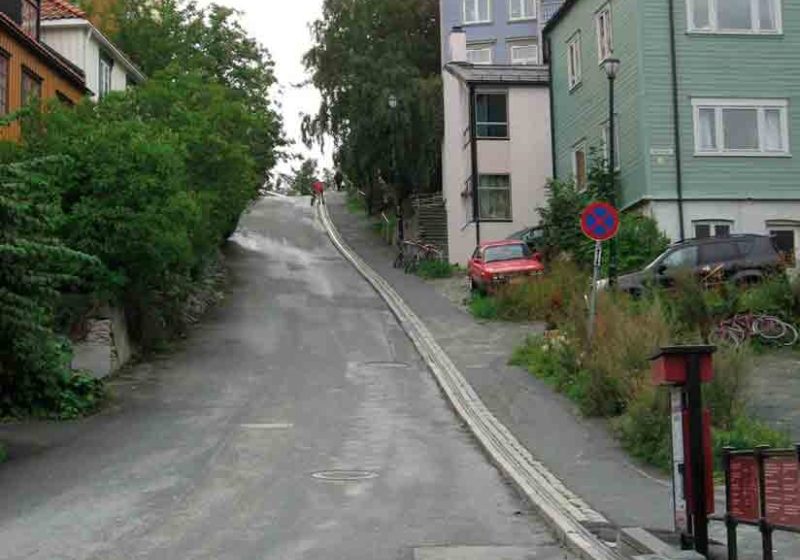Company’s patented Fit Pit System is discussed
They say necessity is the mother of invention. In the world of elevator repair and maintenance, this is no different. H2O Gone, LLC of Plymouth, Minnesota, was established in 2010 to address the impacts of the ever-changing elevator and building codes. Its founders have more than 100 years of collective experience in construction related to elevator modernization, as well as plumbing, electrical, masonry and carpentry experience. The collaborative effort led to the R&D of H2O Gone’s patented Fit Pit System.
In 2005, two of H2O Gone’s future founders, Rick Bialick and Britt Aaseby, created a company called Ultimate Construction Services, which primarily focused on elevator modernization. They were present for many elevator walkthroughs that involved a need to remove water from the elevator pit. Elevator companies and consultants expressed ongoing frustration with water intrusion and frequently commented, “There has to be a better way.” The challenge with developing that “better way” involved the elevator, building, electrical and plumbing codes, which needed to be considered in any attempt to permanently remove water from the pit. Hoping to provide an end-to-end solution, Bialick and Aaseby enlisted electrical and plumbing colleagues to solve one of the most common problems in the elevator world: the wet pit.
While the wet pit was the observable problem, the team knew there were several reasons to tackle the issue. First, a wet pit can cause a number of issues for the mechanisms within the pit. Second, standing (or a constant flow of) water created a breeding ground for odor, mold and mildew. Finally, the team knew there were many dangers in having to work underneath the elevator cab in a pool of standing water. Thus, their mission became one to develop a water-abatement system to remove all working mechanisms from the elevator pit.
The team recognized a number of benefits removing those mechanisms would have. First, there would be no chance for sump pump or electrical failures due to the presence of water. Second, building managers could monitor the system without having to take the elevator out of service and spend time in the pit. Third, all monitoring and routine maintenance could be done from outside the pit. Without this capability, the only time a problem would be detected is after it has actually become a problem.
Before the Fit Pit System had a “name,” the system was installed in retail centers, stadiums, commercial buildings and multifamily structures both around the Minneapolis-St. Paul area and throughout other areas of Minnesota. The success of these original installations prompted the decision to launch a separate endeavor, H2O Gone, for the future marketing and distribution to other contractors across the nation. R&D continued for another year before the system’s launch. A new website (www.h2ogone.com) and marketing campaign began this March.
What Is the Fit Pit System?
Water can seep through the walls and floor of an elevator pit enclosure due to building landscaping elevations, ground level of water in the area or type of soil conditions. Regardless of the water’s origin, mold and mildew growth happens in moist environments – such as wet elevator pits – and can cause serious health risks. Additionally, experience has shown that one of the most damaging enemies of elevator equipment is water. The Fit Pit water-abatement system was developed to remove standing water and prevent additional water infiltration into an elevator or escalator pit enclosure. All of the system’s serviceable mechanical and electrical components are located entirely outside the elevator enclosure, ensuring compliance with local and national elevator-code requirements.
The Fit Pit System was designed utilizing CentAir CoreTM technology to continuously monitor the water level within the collection site and communicate those measurements to the Fit Pit Control Panel. Since personnel will not have to enter the pit for this task, safety concerns are eliminated. While “regular” sump pumps in the elevator pit create unnecessary risks to maintenance personnel and they are not designed for continuous operation, there may be an increased need for their regular servicing and/or replacement. The Fit Pit System’s pump is designed with continuous operation and discharge distance in mind.
The system is also modular in nature. Its interchangeable parts can be varied to ensure compliance with the code requirements of local, state and national AHJs. With options for above- and below-grade redirection of water, higher-capacity or lower-capacity pumps, options for longer discharge runs and additional alarm contacts, the product is capable of meeting the needs of most water-removal situations.
As excavation of the exterior edges of pit floors is not always structurally feasible, H2O Gone has been working on another technological enhancement to the Pit Fit family. This as-yet-unnamed enhancement allows for the redirection of water from the side walls by channeling it into the Fit Pit’s collection basket from above, instead of beneath, the pit floor. This enhancement has already been successfully installed in several locations.
Get more of Elevator World. Sign up for our free e-newsletter.









